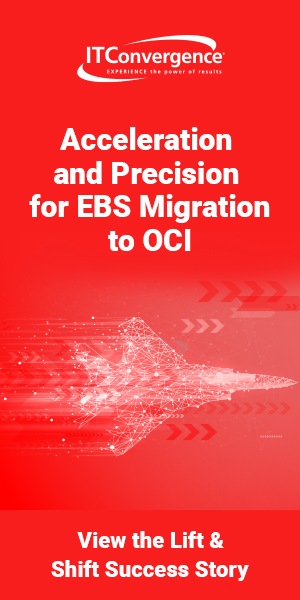Many IT leaders attempt public cloud migration in the absence of a vetted cloud strategy or without satisfying important prerequisites, which lead to suboptimal outcomes or outright failure. Public cloud migrations can get complex due to the number and kinds of workloads to be migrated, and the number of possible destinations and transformations. Although best practices exist for planning and implementing public cloud migrations, they must be adapted for each specific situation to be successful.
Post several move and improve migrations for simple to complex OCI projects, our certified cloud experts have developed the right methodologies & toolsets for Oracle applications to ensure we deliver accelerated, first time right solutions to our customers.
Here are some lessons learned, turned into IaaS and Paas Best Practices for you to prepare and execute to succeed in your Oracle Cloud Infrastructure migration journey.
 6 Lessons in Migration Preparation
6 Lessons in Migration Preparation
- Third Party review for Licensing (BYOL) – If you intend to BYOL and have not been either audited or had a third party review your Oracle licensing, it may be to your benefit to have that done before asking for OCI pricing. The results of this work effort will not only ensure you are architecting based upon the licenses you own, it may uncover the need for additional licenses or to architect “License Included” for your databases to impact your TCO.
- Cost of Licenses – Secondarily to point #1, it may make sense in that same third party review to understand the costs associated with annual maintenance for your Oracle licenses. Perhaps PaaS offerings estimated as “License Included” may be more cost-effective when looking at a total cost of ownership.
- High Speed connectivity: Procurement and configuration of FastConnect may take a bit of time based upon your network provider. Know the approximate lead times to factor into the overall migration plan.
- Environment and architecture: Taking time before the migration kicks off to collect environment and architecture information will save the migration team time. Obtain and/or document an architecture diagram with these data elements: server name, purpose and operating system version; database type, purpose and version; application type, purpose and version; port IP addresses; shared storage mounts; allocated storage across the environment; API connections.
- Networking: This is the foundation of any OCI tenancy build. Obtain and/or document current network diagram illustrating locations in and out of the environment with bandwidth and connectivity methods where known that exist today. Provide for total and anticipated user counts per each geographical region that will require access into/out of OCI. The mandatory OCI mapping exercise as a result will be shortened and streamlined.
- Documentation: Document the most critical processes, forms, programs, interfaces, etc. within the source systems including navigation and current performance measurements from each of your geographies. Benchmarking is extremely valuable to determine whether or not performance tuning may be necessary during the OCI migration.
4 Lessons in Migration Execution
- Documentation is key. Insist on updates to the documentation you collected and/or write prior to initiating the migration. If you elect to work with a managed services provider or change providers, not having this information up-to-date and properly documented may mean longer transition times, errors or even outages as takeover of the environment occurs.
- Oracle Traffic Director should be tuned with all caching parameters for best performance.
- File permissions should be set as per on– premises folders for error-free interface configuration.
- Ensure cleanup is scheduled and completed after the migration to avoid cloud consumption costs for services only necessary during the migration itself.
Conclusion
While these learnings can help you avoid speed bumps on your OCI migration journey, our experts have devised the right methodologies and tools to help you accelerate this journey by up to 30% or more and help you reduce time, risk and cost of migration to OCI.




